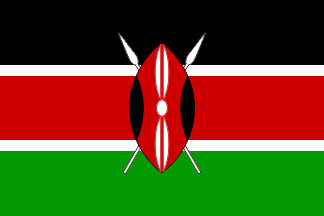
ABOUT THE ODHIAMBO MBAI CENTRE
The Odhiambo Mbai Centre was established in 2004 and is registered as a Non- Govermental Organization (NGO) by the NGOs council of Kenya. The Centre operates in Kanyada location, Asego division in Homa Bay district. It was formed as a tribute to the Late Dr Odhiambo Mbai who before his death had been undertaking various developmental projects in the area. The centre therefore not only works as an instrument to continue the work he started but also as a means to mitigate the rampant underdevelopment of the area.
IMPORTANCE OF ESTABLISHING THE CENTRE IN KANYADA
Kanyada is a location in Kenya’s Nyanza province. Although the province borders the world’s second largest fresh water lake and is endowed with enormous resources; these factors have not translated into better living standards. The Central Bureau of Statistics (CBS) ranks Nyanza as the poorest province in Kenya. The province has an urban poverty rate of 63 per cent and a rural poverty rate of 65 per cent.
The province is characterised by low education standards, lack of health facilities, high HIV/AIDS prevalence rates, lack of proper sanitation facilities and limited access to clean water supply. All this factors have collectively contributed to the high illiteracy levels, malnutrition levels, an increase in poverty related infections and the high infant mortality rates. Nyanza for example reports 206 deaths per 1000 live births compared to the national rate of 166 deaths per 1000 live births. Further, because constituencies in Nyanza have a high disparity in terms of poverty distribution, Homa Bay which is in Rangwe constituency district reports 240 deaths per 1000 live births. According to statistics Rangwe has a p population of 145,274. 104, 335 individuals live below the poverty line (1999 Kenyan census)
The distinct cultural practices and governmental marginalization are some of the factors that are believed to be contributors to poverty and underdevelopment in the province. Of particular concern is the plight of women and girls in the area. The cultural practices and overall women’s representation in key socio- economical mainstream settings is low, their attendance at secondary schools limited, earnings for working women are significantly lower than men, and they find it more difficult to move into non-traditional fields of employment. Under the current constitution, daughters do not have inheritance rights to land.
CENTRE’S OBJECTIVES IN THE REGION
Our main objective is poverty reduction and improved livelihoods for the people of Kanyada. We focus specifically on education, health and economic productivity for the Kanyada community. Our wider objectives are to:
• Raise standards of and access to education;
• Strengthened human capacity with improved food security, nutrition and livelihood activities;
• Improve access to essential primary health care services, sustainable access to safe domestic water;
• Empower women and strengthen their capacity to plan and manage their own development;
• Combat HIV/AIDS and other poverty related diseases such as malaria, polio, tuberculosis and the like.
FUNCTIONS OF THE CENTRE
The centre functions in two capacities:-
1)As a means of providing the necessary socio-economic infrastructure for the community and;
2) As both a forum for the people of Kanyada to articulate their problems and a vehicle for them to realize their developmental aspirations.
TARGET GROUP
We recognize that the community in its totality needs to be catered to; however because of the overwhelming needs the centre has developed a system that focuses on groups considered most vulnerable depending on the particular project.
SUCCESSES
In keeping with our objectives, since its inception, the centre has either directly or indirectly influenced the implementation of the following projects.
a) The building of Majiwa Primary School
Majiwa primary school was the brain child of Dr Odhiambo Mbai. The construction of the school was aided by the European Union. Unfortunately Dr Odhiambo died before construction could be completed. After his death the Centre stepped in to see the school to completion. The Centre, also currently functions on the school’s board of directors. There are plans to expand the school up to the secondary level. The school has been very instrumental in improving access to education with some classes now having more than 100 students. The centre hopes to initiate other education projects in the area to mitigate the overwhelming need.
Majiwa Primary School
b) Water projects
The centre through an aggressive campaign to the Ministry of Water has been able to improve access of clean water for the people of Kanyada. The Centre has facilitated the construction of two boreholes in the area. Before the initiation of the water projects the community mostly relied on swamps and rain water collected through roof gutters. This was particularly problematic because the area is relatively dry and experiences little rainfall through out the year. Further water from the swaps was seen as the major cause of acute respiratory infections, dysentery, typhoid, diarrhoea and low mortality rates. People also used to spend a lot of time that could be used in engaging on economically productive activities looking for water.
The water projects have brought significant change in that:-
• They are encouraging more people to engage in farming activities both for food security and income production.
• Less time is being spent on looking for water and the community is now focusing on other developmental initiatives to raise their living standards
• They have improved the functioning of the school and should assist in other up coming programmes e.g. school feeding programme if more funds could be raised.
• They have brought a sense of hope for better things to come and people are now more involved in development oriented discussion and debate.
• It is believed that water related disease rates will come down in the future especially in children
c) The building of a church
Religion plays a very important role in the lives of the people in Kanyada. The relationship between faith and development has been explored by various organizations. Faith plays an important role in sustaining people who are faced with the problems that arise from adverse poverty. It has also been discovered that in worship spaces the issues that divide people and hinder sustainable development, such as status, sex, and clan ties are left behind. This is therefore seen as a great entry point where both community leaders and general public can be mobilised for development projects.
St Crispin Church
The church was built through fund raising functions organized by the Centre and community contribution. Through the church the Centre has been able to see groups that are committed to change their circumstances formed. A good example is The Masroma Women’s group.



No comments:
Post a Comment